
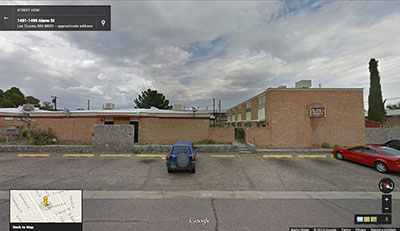
I knew that there was someone at the door because he was knocking. I knew that he was going to come inside because no one who knocks that hard doesn’t ever not come inside. I knew that he was going to kill us because no one ever knocks that hard. Soon the door would fly off its hinges. Then we would be dead.
Given that I knew these things and the certainty with which I knew them, it’s no wonder that I woke up screaming. I think I asked my wife, Tracy, who it was. I don’t remember what she said. Then she said that there was no knocking man, that the sound I heard was a gun. Someone had been shot to death.
We lived in Las Cruces, New Mexico, where we rented a two-story apartment on a street called Alamo. Our bed was on the second floor. The master bedroom’s window overlooked a narrow street, more apartments and their parking lot. We never opened the blinds because there was never anything we wanted to see outside.
"At some point, I came to understand that a person had been shot to death."
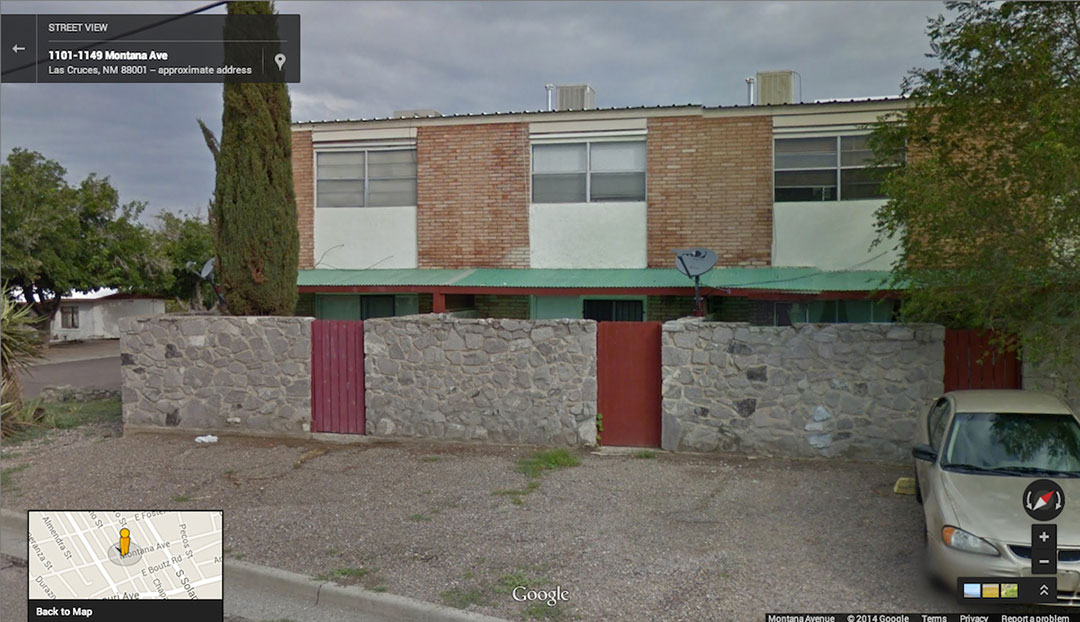

Tracy crouched by the window and lifted those blinds off the sill just enough to peek through the gap. I was afraid to do the same — I was thinking about television. There’s an episode of The Wire (probably the closest thing I have to a frame of reference for violence) in which a child is accidentally killed by a stray bullet fired during a gang fight. The child is — if I remember correctly — in a second-floor apartment. The bullet flies up and through the wall, then kills him. This all happens off screen. We only see the aftermath. The child’s mother has taught him and his siblings to get low when there are gunshots, so there’s a moment when it seems possible that he’s only frightened, that he is staying low to keep safe. But that’s not it at all.
I wanted to stay low to stay safe. I wanted Tracy to stay low too. She might have stood up eventually. I don’t remember. I don’t think I did for a long time. I did kneel beside her at the window just long enough to glance at the parking lot across the street.
The police were outside and so was their rifle. I don’t think that I saw it, but I did see the police. There were two of them. Did the shooter drop his rifle? Surely not. He must have been holding it. The fact remains, I didn’t see it.
Tracy saw that the gun was an assault rifle, which explains in part my waking belief there was an angry person beating down our door. This was also the first time that I had ever heard a gun fired. I was 24 years old. I’m 27 now. I haven’t heard one since.
The other thing I saw, the thing that I am trying to remember now so I can draw a picture for you, was a jacket or a hoodie. I think it was a hoodie. I remember it as having a sort of glossy, reflective surface, like a thermal blanket. I remember its arms were spread wide, and it was face-down, so to speak, on the pavement. I can’t remember if it was orange or blue.
The police stayed and waited for other police to arrive. Tracy watched much more than I did. At some point, I came to understand that a person had been shot to death. I don’t want to write his name because I never knew him. The vast majority of news accounts would note that he was called “Lizard Man” by some of his friends because he owned and loved so many lizards. Many of these news accounts would use this nickname in their headlines. Journalism is a very dignified profession.
What I must have seen when I believed that I saw a hoodie was in fact the dead man. Though at least one account initially implied he was shirtless, it seems he was in fact wearing an orange shirt. It’s not clear to me if the shirt was long sleeved or short sleeved, but I can find no mention of a hood. I remember the hoodie as lying face down, but this must be wrong, because though he initially fell forward, court testimony indicates that the officers then demanded that he roll onto his back. (My wife heard this, though she does not recall their exact words.) He complied. Though I remember the hoodie’s arms as being spread, this can’t be right — they cuffed his hands together. Some time soon thereafter, he died.
I have tried to find a photo of the body. There is some footage aired on television, captured from another person’s second-story window, but the torso appears to be blurred, presumably to protect the viewer. Looking at footage now, wherein the body’s legs are almost discernible, I think the glossy blue material my memories sometimes attribute to the hoodie must have really been his pants, which I don’t remember at all, except in that detail.
If I could find a picture of the body now, would I finally remember what I really saw? Or would I still see the hoodie?
I’ve attended three funerals in my life so far. The first was for an aunt’s brother, a suicide. I gave her a pastel drawing of some yellow flowers because yellow was my favorite color and because I thought that it might make her feel better. That aunt is not my aunt anymore (she married into, then divorced out of the family), and I never knew her brother. I believe that the casket was closed, and in any case, I never approached it. The second funeral was for my mother’s second cousin, an old woman whom I likewise never met. The third was for a woman named Juanita. She had worked for years at the YMCA daycare that my mother managed and where I also worked for a time. She always worked in the baby room, which was exactly what it sounds like. Though I was fond of Juanita, she was the oldest person that I’d ever known, so her death was no great shock. In no case do I recall seeing the body. In the third, I may have approached the casket. If I did, I believe it was closed. I believe there was a portrait of her on its lid.
Nobody close to me has ever died, though there have been times that I believed someone I loved would die soon. So far, I’ve been wrong every time. My good luck can’t possibly hold. I expect the first death to come soon.
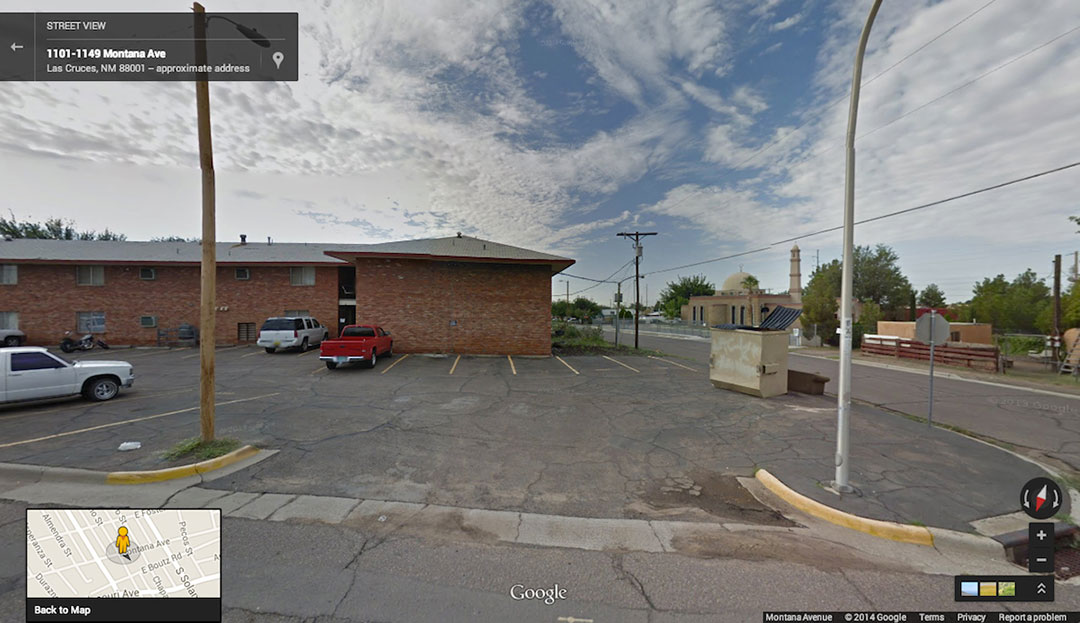

Here is why the police officer shot the man that died outside my window: He had a sword. The media and the court called it a “samurai” or “samurai-style” sword. Estimates of the length vary from three feet to four feet. The decision in the wrongful death suit that followed states unambiguously that it was four feet long. I don’t remember seeing the sword, though my wife says that she does. After shooting the man, the police approached his prone body and kicked the sword away from his hand. By the time I found it in myself to peek out the window, this would have already happened.
Police taped off the scene. News vans and other onlookers congregated. My wife and I didn’t have anywhere to be that day — we were graduate students. My wife looked again long before I did. She says they left the body out and visible for most of the day. She says that one leg was folded such that its knee was up in the air, while the other lay flat and sharply skewed. The next time I tried to look down on the body, it was hidden by the gathered vehicles and a kind of screen.
It was July 13, 2010. I wouldn’t know that without the public record to remember it for me. The dead man was 23. He had been diagnosed with bipolar disorder. He had just broken up with his girlfriend the day before. She was eight months pregnant. He was reportedly upset over her recent move to Albuquerque. (News accounts agree that the same sword he carried that day had previously been confiscated by Las Cruces police, but they differ as to whether this took place because he held his girlfriend hostage with the sword or because he threw some of his lizards at her.) She called 911 to warn the police that he was suicidal. The man also called the police, identifying himself by his first name. He claimed that someone in an orange shirt was roving his apartment building, sword in hand, “raving.” When the police arrived, they found him seated in his vehicle. They would later testify that he climbed out of the car and raised the sword in a gesture of unambiguous menace and provocation. They would testify that he advanced, that they told him several times to stop, to lower the weapon, to stop. They would testify that they feared for their lives.
Witnesses for the plaintiff in the wrongful death suit that followed testified that the officers only warned the dead man once. They claimed he only took one step before he was shot. Contradictions in their testimony led the judge to conclude that they were likely mistaken. My wife only heard one person shout one time, but she had just woken up. For my part, I was still asleep.
The police were cleared of all criminal wrongdoing. In the wrongful death suit, the judge agreed, concluding that the man’s death was a case of premeditated “suicide by cop.” This was substantiated by text messages he sent to his girlfriend, reproduced below verbatim:
Of course, we couldn’t know any of this at the time. By that afternoon, some news stories had already been published naming the body, including his nickname and describing, to varying degrees of accuracy, some circumstances of his death.
I thought that I should probably feel very upset. But I wasn’t. I was sad. I was a little bit excited to have witnessed, however incompletely, someone’s violent death. Mostly, I felt muted curiosity. I had a story to tell. I was fine.
After writing the above paragraph describing my childhood experiences with funerals, I wrote my mother an email, including said paragraph in its body. I asked her to fact-check it for me. My memory is notoriously poor, especially concerning the details of my own life. She wrote me back almost immediately.
Here is what I got right:
Here is what I got wrong:
I can’t remember those bodies at all.
"... I didn’t really remember anything but the sound the gun made."
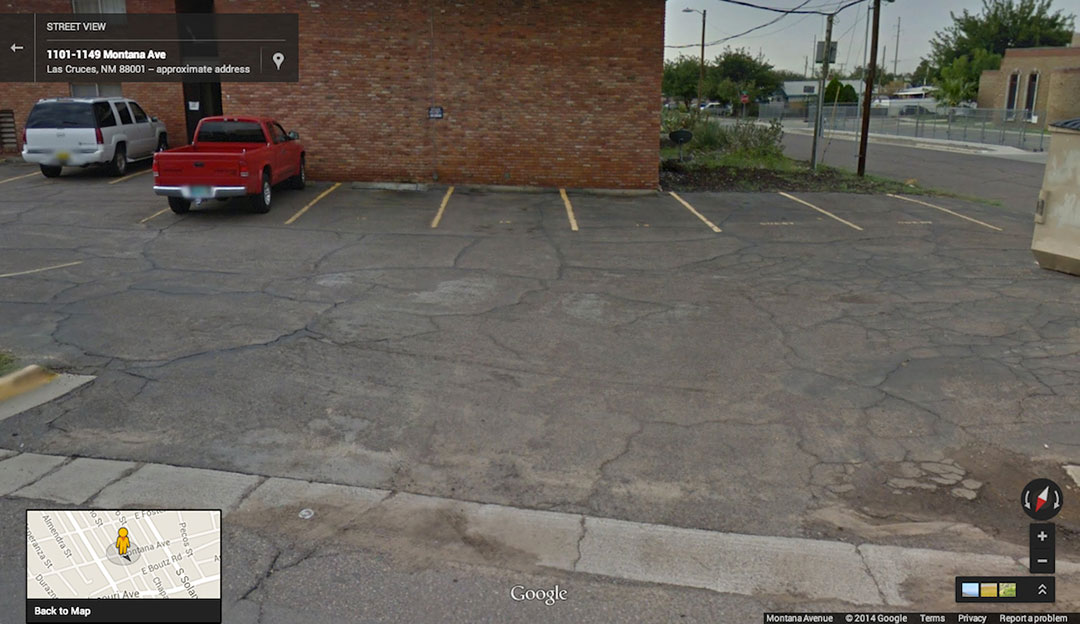
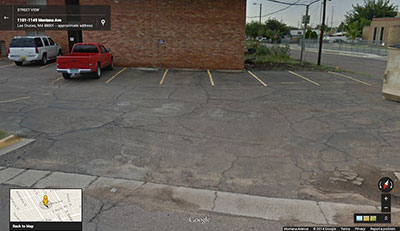
We were interviewed twice about what we heard and what we saw the day of the shooting. The first time was a policeman, who came that same afternoon. He had to interview everyone who might know anything about what happened. We didn’t drill too deep beyond the basic facts. Tracy answered most of the questions, but I tried to be helpful. He asked us if we heard a scream. I should have said, but did not say, “That was probably me.”
The second time it was a lawyer for the dead man’s family. This was several weeks later. He arrived without warning; we had no local phone number that he might have called. This was presumably the lawyer who eventually brought suit against the city of Las Cruces. I remember he was a broad man, taller than me, wearing a suit, with thick, silver hair. He sat in the borrowed white lawn chair that was our second-best furniture then. His interview was much more thorough. He also shared his own information, including a matter of public record neither Tracy nor I had discovered in the intervening time: The cop who shot Lizard Man had been involved in a similar incident — this one involving a knife rather than a sword — just a few years before. We agreed this was perhaps suggestive. Tracy reiterated that she only heard one officer give one warning. At this point, I was willing to admit I didn’t really remember anything but the sound the gun made.
We wondered sometimes what came of the suit, and since they never called Tracy for any further assistance, we imagined it never went forward. But they had better witnesses, who testified they saw the shooting. This still wasn’t enough to assign the officers any blame.
Which is not to say that they were definitely blameworthy. When a man tells his girlfriend that he aims to make the police shoot him dead, and when he calls 911 on himself and when he makes an unambiguously threatening gesture at the police with a sword between three and four feet long, and if he is then shot dead, then it is hard to say with any confidence that the shooter should have done otherwise, even if there are legitimate questions as to how many times the shooter told the man with the sword to be still, whether an AR-15 assault rifle is a proportionate response to a “samurai sword” and whether the man with the sword really did advance on the shooter and his partner more than just that one step, which may be enough anyway — that is to say, one step.
Here is what I think it will be like to die:
I am swimming in a very clear pool with no bottom. I have to go underwater because I have to go underwater. I suck in as much air as I can, brace myself and close my eyes.
When I put my head under the water, I will vanish completely. No one else in the pool will be able to see me, even though the water is so clear, and I will never come back up.
I would like to say I learned something from seeing these bodies, but the fact is I never really saw them. There have been four dead bodies in my life thus far. I can’t tell you one thing about any of them, except that however they were in that moment, whatever they were like in death, they didn’t used to be that way at all.
Mike Meginnis is the author of the forthcoming novel Fat Man and Little Boy (Black Balloon Publishing, October 2014). His writing is published or forthcoming in Best American Short Stories 2012, Unstuck, Hobart, The Pinch, Hayden’s Ferry Review, The Lifted Brow and many others. He now lives and works in Iowa City, where he operates Uncanny Valley Press with his wife, Tracy Rae Bowling. He has never seen the ocean.
(Image credits: All from Google Maps)